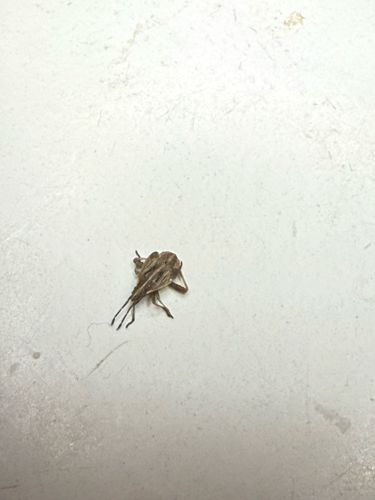Leafhopper (likely a planthopper due to the shape)
Scientific Name: Fulgoromorpha (for planthoppers, though more specific identification is difficult from image)
Order & Family: Hemiptera, Auchenorrhyncha (suborder which includes planthoppers and leafhoppers)
Size: Typically 2mm to 10mm, but some species can be larger.

Natural Habitat
Found on a wide variety of plants, including trees, shrubs, grasses, and agricultural crops. They are typically outdoor insects.
Diet & Feeding
Herbivorous. These insects feed on plant sap by piercing plant tissues with their specialized mouthparts (stylets).
Behavior Patterns
Planthoppers are known for their jumping ability when disturbed. Many species have cryptic coloration that allows them to blend in with their host plants. Some species are migratory. They often lay eggs in plant stems or leaves.
Risks & Benefits
Potential risks include being vectors for plant diseases, which can significantly damage agricultural crops and ornamental plants. They can also cause direct feeding damage, leading to stunted growth or wilting. Benefits include being a food source for other insects and birds, contributing to the food web.
Identified on: 10/22/2025